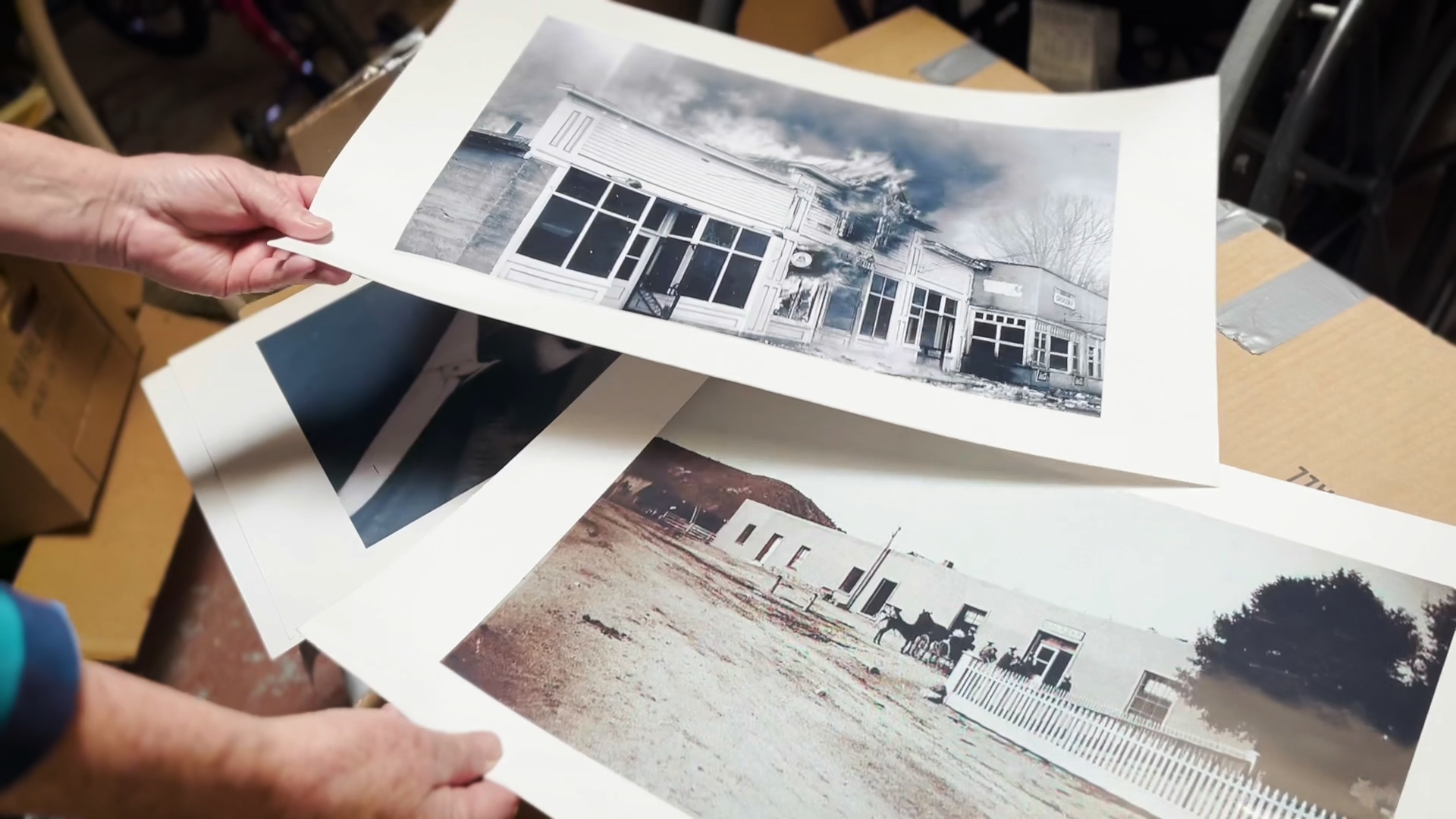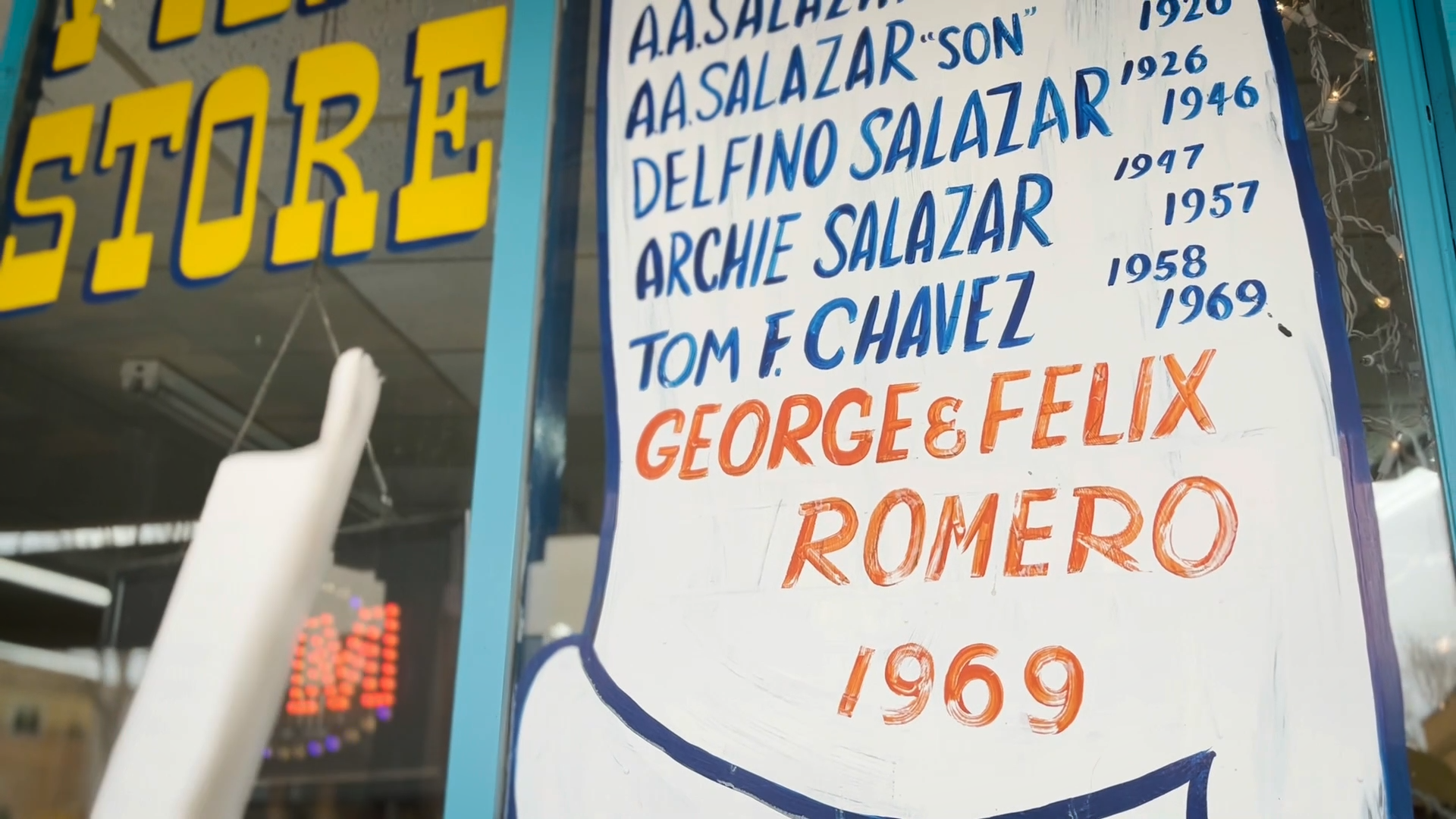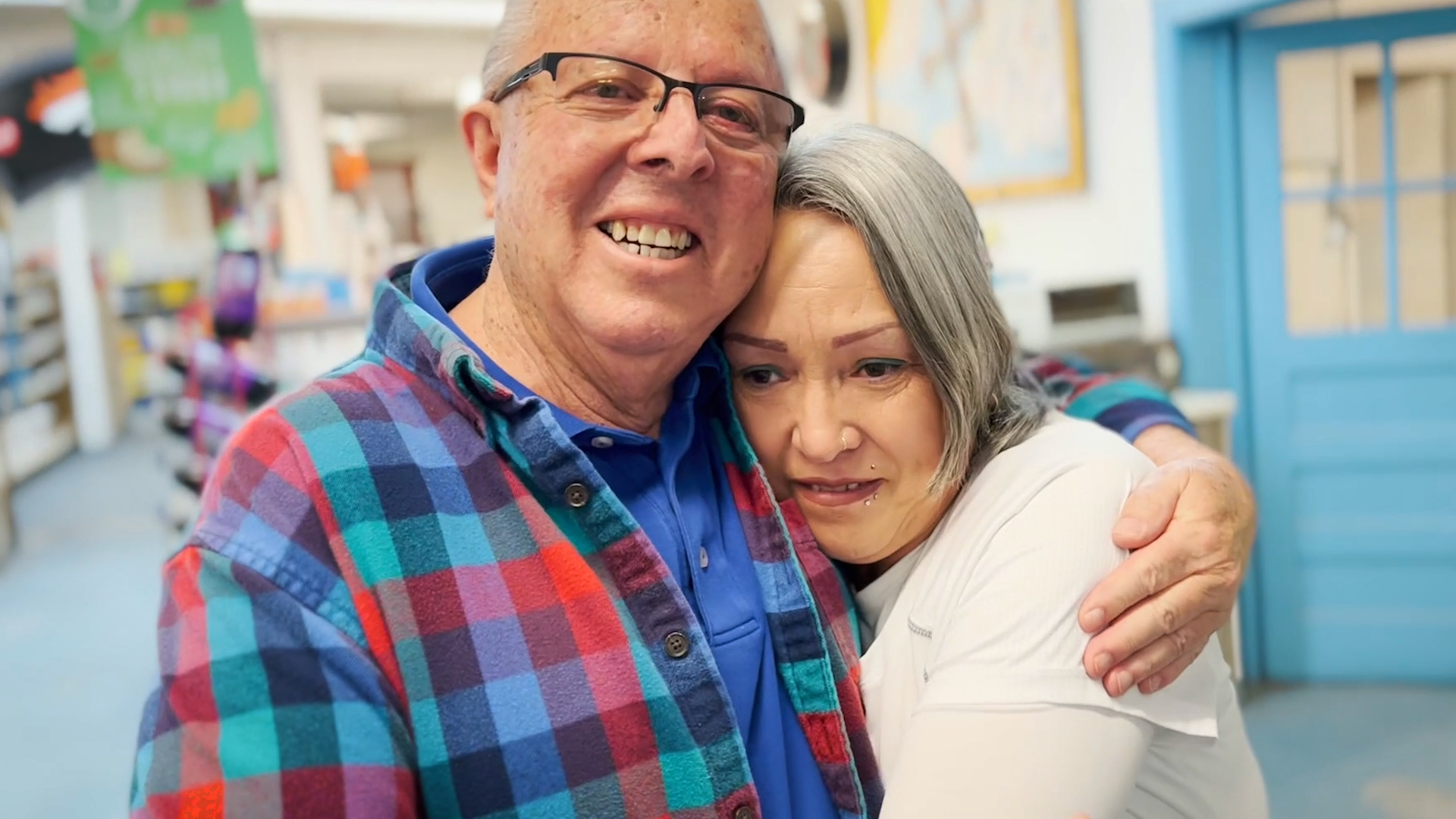The oldest grocery store in Colorado changes ownership

SAN LUIS, Colo. — Colorado’s oldest grocery store and oldest continually operating business has changed hands.
After 52 years at the helm of the R & R Market in San Luis, Felix Romero has retired. A lifelong resident, seven generations of Romero's family have managed the R & R since before Colorado’s territorial days, starting with Romero’s great-great-grandfather, Dario Gallegos, in 1857.
“One hundred and sixty-five years says something about what kind of business this was,” Romero said. “I hate to be the one to break tradition. But in essence, I think it's still going to be in the family.”
After half a century stewarding the Main Street staple, Romero will now have time to do what he loves: write. He is completing a book about the region he started years ago but never finished.
“It’s bittersweet,” he said of retirement. “How soon I'm going to get over it, I don't know.”
As this story comes to a close, its sequel is already being written: the Peoples Market just awarded local farmers its first grants to grow food for the inaugural 2022 market season.
San Luis was first called San Luis de la Culebra, named for the river it was settled upon. The Culebra weaves like its namesake snake from the mountains down through 9,000-foot-elevation desert fields, one of several rivers fueling a vast system of hand-dug irrigation acequias.
Founded in 1851, San Luis is among the first permanent settlements of what is now Colorado — although Spanish and Mexican forces had been trying to settle land grants in southern Colorado for many years, unsuccessfully fighting tribes including Southern Ute, Diné, and Jicarilla Apache. Area residents tell stories of Native ancestry, warring nations, and their own citizenry, founded in an odd moment in time: post-Treaty of Guadalupe Hidalgo, pre-Colorado Territory. Whatever it was then, it is now; a meld of Old World and New World that creates a specific solidarity.
Growing up just outside of San Luis, Romero’s mother used to send him to the R & R Market for staples. “I used to ride my bike from the farm,” he recalled.
Yet the legacy of his family owning the store wasn’t at the forefront. “We didn't really realize how important it was until later on in life,” Romero said.
By now, it is legend. In 1857, four years before Colorado became an official territory of the United States, Dario Gallegos and business partners began the oldest continually operated store in what was to become the state of Colorado. The first commodities included legumes, corn meal, coffee, salt, cloth and tobacco. In order to replenish the town’s stock, 11-month round-trip journeys were made to St. Louis via horse and wagon, with merchandise frequently intercepted by Indigenous tribes.
Antonio Alcario Salazar, who took ownership of the store along with Gallegos’ widow in 1874, was originally from Abique. In 1851, he walked to San Luis with his mother after his own father was killed in a battle with Native Utes while attempting to establish a village along the Río Culebra.
Although fires destroyed the store in 1895 and 1947, it was rebuilt on the same plot of land, and grew. As a mercantile hub, it brought in the area’s first farm machinery, barbed wire fence, and alfalfa seed.

Locals grew corn, beans, peas, potatoes and livestock. Growing up, Romero’s family also grew most of their own food. He helped irrigate, pick potatoes, bale hay, feed animals and chop firewood.
“We didn't have a whole lot, but we were happy kids,” Romero said. “We just survived by working.”
Romero took over operations of R & R Market with his father, George, in December 1969 after completing college at Adams State University that June.
"My father called me one day and said, ‘How would you like to go into business?’ And I said, ‘Uh, I don't have any money,’” Romero recalled, laughing. “And he says, ‘Well, we'll go in as partners. I'll put up the money, you run it. And it'll be a 50-50 thing.’”
That was 52 years ago.

“The first day we opened the store, I had no idea what was going on,” Romero remembered. Overwhelmed, “I’d meet myself crossing the aisles, you know,” he laughed.
His memories of early days operating the R & R are tinged with the vibrancy of local characters.
“It was fun. The 20th of the month is when the old timers received their pension. This was like a holiday,” Romero said. “The town was booming. You couldn't fit people in here sometimes. Those days were great.”
One of his favorite aspects is being a trusted ear. Sitting in the back office, people would approach the window to “ask me for advice,” Romero said. “I enjoyed that. Any problems, they would come to me.”
This caught the attention of the local priest.
“Father Pat, one day, he says, ‘What, are you giving me competition in confessional now?’ And I said, ‘Well, yeah! The only thing is, I can see the people who are talking — and you can’t!”
A staple of the local social sphere, the R & R provided grocery mainstays, too, like milk, bread, meat and beans, Romero said. His family historically supported the local barter and trade economy by exchanging commodities with local farmers for fruit and vegetables they’d sell at the market. “We traded with farmers here, and for anything that would come from New Mexico,” Romero said. “We traded for apples, chile, you name it. We used to trade for wheat to make flour.”
Romero remembers his father bringing 100-pound bags of wheat to the flour mill at the edge of town and returning to the store with sacks of flour.
In a time when the bank system often would not lend money to farmers and ranchers in Costilla County, Romero’s family extended credit for provisions.
To make it through the shepherding season, “the guys that had sheep would open up a credit account, and we would carry it for a year,” Romero said. “And at the end, in the fall, when they sold their lambs or whatever, they never failed. They came and paid me. We went on like that for many years. And it was like that before me,” Romero said. “We are all family. If somebody needed something, they came to me, and I never denied them.”
Romero said it’s these daily community relationships he’ll miss the most.

Carmelita Borrego, who was hired by Romero’s father 19 years ago, said she wishes her boss the best.
Borrego remembers the day she met Felix; it was also the day his family gave her a job. She was working across the street at a gas station that was being sold.
“That day, I ended up with no job. So, Felix’s dad is there and says, ‘Don't worry. You have a job across the street. Go across the street if you want a job,’” Borrego said.
They became like family, she said. “I am going to miss it a lot. When somebody opens the doors for you in their heart, you need to appreciate it."
Borrego and other staff will stay at the market throughout its transition and beyond, Peña said.
“We have about 100 years of knowledge and skill on this staff,” Peña said. “They're the experts.”
Peña’s plans for the Market include contemporary reflections of the mutual aid remembered by Romero, like a revolving loan program, as well as expanding the Market’s function as a nutrition education hub. It's all part of a revival of the solidarity economy Peña and Romero say is critical to the region’s survival.
“It's not just a building. This is a tradition. It's an institution. It's a heart of the community,” he said. “It's what brings people together, not just to buy food, but to share being alive."
The San Luis Peoples Market "anchors Main Street,” said Peña, who noted that Main Street is “on the verge of a revival.” Bringing back services the R & R historically provided, like a place for local growers to sell their crops, is key.
A regional shift occurred over time from the barter and trade system to a primary cash economy, Peña said. It began in the 1850s during the drawn-out transition from Mexican law to a territory of the United States. As a dividing line was draw between Colorado and New Mexico, land and water deeds were challenged by the incoming government, creating an impoverished start for many in their new life. The subsistence lifestyle was challenged continuing through privatization and reclamation of the commons throughout the second half of the 20th century. Throughout, farmers made economic decisions, limiting herds and food and vegetable production at the same scale. As crops shifted, so did the local diet, and the availability of certain fresh foods.
Diabetes rates and other health indicators then changed significantly, Peña said. “Not only has the culture gotten eroded, but the land got eroded, and our health was eroded,” he said.
He plans to eliminate soda at the Market and replace it with natural cane sugar drinks, put low-sodium and low-sugar versions of food products on the shelves and install a greenhouse on-site, complete with a restaurant-deli-cafe, and cooking and nutrition classes featuring local foods.
From there, the sky is the limit: Peña would like to increase stipends for youth who participate in classes, events and farm work, and bring in local artisans to share their disciplines and skills. He also wants to produce and distribute corn tortillas made from local heritage seed he has been collecting for nearly four decades. He estimates some 15,000 relatives of local residents live along the Front Range of the Rocky Mountains and would also “love good, local foods, with that taste-to-memory link that really helps people keep their connection to place, wherever they are.”
Peña — who first came to San Luis in 1984 and who grew up in South Texas with similar Mexican-era land conventions, water and social systems — said he also understands greater issues facing the community.
“There's a lot of drug use, a lot of alcoholism, and a lot of intimate partner violence,” he acknowledged. “Let's not pretend that there aren't issues here. We have serious issues beyond diabetes and obesity within our social relationships. The role of this mercado is as a center of community renewal and trust.”
“The pharmacy is our garden, and the food is our medicine,” Peña continued. “This can work. People will want to go back to their heritage cuisine. And if they go back to their heritage cuisine, they'll get healthier. That's the idea. From dirt to gut, and spirit.”
Kate Perdoni is a multimedia journalist for Rocky Mountain PBS and can be reached at kateperdoni@rmpbs.org.
Related Stories
The new San Luis Peoples Market will continue R & R’s uninterrupted 165-year legacy as a social and economic hub, with aims to increase mutual aid and bolster local food security by partnering with area farmers and ranchers.
Under the leadership of Devon Peña — the Acequia Institute founder and University of Washington professor — the store will become a local cooperative. The Peoples Market is largely supported through a community health project grant from the Colorado Health Foundation.
“There’s nothing new here,” Peña emphasized in his plans for the Peoples Market. “Everything we're doing is based on local, place-based knowledge. It's a revival of cultural memory, and a restoration of traditional land ethics and traditional relationships between people.”
The Market has always been more than just a grocery store, Romero said. “I call it an Institute. This is where people come to know each other and understand some things in life.”
After half a century stewarding the Main Street staple, Romero will now have time to do what he loves: write. He is completing a book about the region he started years ago but never finished.
“It’s bittersweet,” he said of retirement. “How soon I'm going to get over it, I don't know.”
As this story comes to a close, its sequel is already being written: the Peoples Market just awarded local farmers its first grants to grow food for the inaugural 2022 market season.
